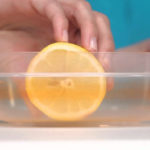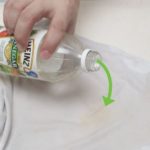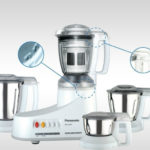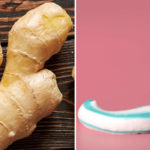Dishwashers are a convenient appliance for many households, saving time and effort. However, some users encounter an issue where their dishes don’t come out completely clean. Let’s explore the reasons behind this problem and learn some tips for using plastic containers with your dishwasher through the article below.
1 Why Don’t Plastic Containers Get Clean in the Dishwasher?
This is a common question among dishwasher users. The issue lies in how you arrange and handle plastic items in the machine.
Plastic tends to attract more grease and oil compared to glass or ceramic dishes. Therefore, if you don’t rinse them lightly with water before loading them into the dishwasher, it won’t be able to thoroughly clean away the grime.
 Why don’t plastic containers get clean in the dishwasher?
Why don’t plastic containers get clean in the dishwasher?
Additionally, the way you arrange plastic containers in the dishwasher is crucial. User manuals usually provide instructions on how to load dishes properly, but many people tend to overlook this, affecting the appliance’s effectiveness.
 Plastic containers can warp at high temperatures
Plastic containers can warp at high temperatures
Plastic is also a heat-sensitive material and can easily warp or deform when exposed to high temperatures. As a result, people tend to choose lower temperature settings when washing plastic items, which may not be sufficient to remove stubborn dirt and grime.
2 Tips for Using Plastic Containers with Your Dishwasher
Here are some tips to ensure both effective cleaning and the safety of your plastic containers:
- Choose the right type of plastic containers for your dishwasher: Not all plastic containers are created equal. Look for symbols on the container’s body indicating their suitability for high temperatures in microwaves or dishwashers. Typically, plastic containers made from polypropylene (PP) or polyethylene terephthalate (PET) are dishwasher-safe.
 Choose dishwasher-safe plastic containers
Choose dishwasher-safe plastic containers
- Rinse plastic containers before loading: Grease and oil tend to cling to plastic surfaces, so make sure to remove any food residue and give the containers a quick rinse before placing them in the dishwasher. This ensures that your dishes come out sparkling clean.
- Sort and arrange your dishes properly: Smaller cups, bowls, and plates should go in the upper rack, while larger pots, pans, and plates belong in the lower rack. Sharp items like knives, forks, and spoons should be placed horizontally in the designated cutlery basket.
- Loading tips: Always place dishes face down, not face up. For curved or concave items, position them on their sides. Avoid stacking multiple plastic containers on top of each other as this will hinder the cleaning process.
We hope you found these tips helpful in ensuring your plastic containers come out spotless from the dishwasher.






































